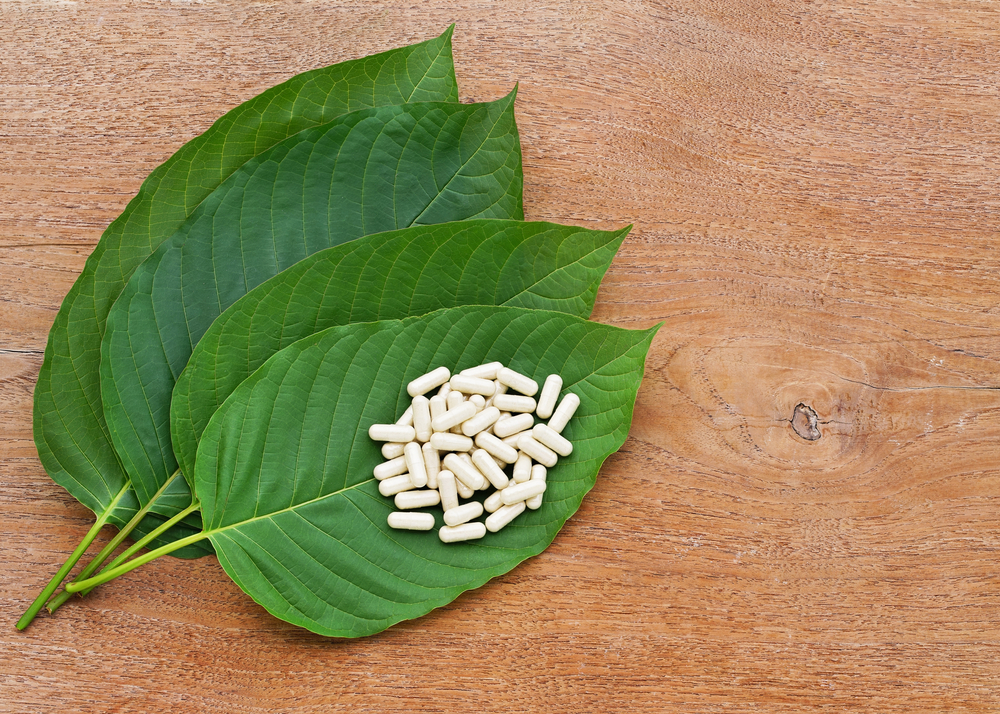Understanding Kratom Addiction – What is Kratom?
Written by Abby Doty
& Medically Reviewed by Dr. Jessica Pyhtila, PharmD
Medically Reviewed
Up to Date
Last Updated - 6/17/2022
View our editorial policy
Kratom is a relatively new substance to arrive on the scene in America. It has been used for quite a while in Southeast Asia as a medication for pain and diarrhea, as well as a recreational drug. Kratom comes from a tropical evergreen tree found in countries like Malaysia, Thailand, Indonesia and Papua New Guinea. Used in the form of an herbal supplement, this is a natural botanical substance.
Kratom is a controversial substance in America. Some claim it has positive medicinal value and that it can help people overcome opioid addiction. However, others say it is just as dangerous and addictive as the opioids it helps some avoid. There is a move to ban kratom in the United States.
There is still a great deal of debate about kratom. We do know that for some, kratom can be addictive. Like any other drug addiction, it is recommended that you seek treatment for substance abuse. Substance use disorder is a disease that needs to be treated, just like diabetes or hypothyroidism.
What Is Kratom and What Is it Used For?
Kratom is a botanical product derived from the kratom tree in Southeast Asia. It is a psychoactive medication that can produce stimulant effects at low doses and sedative effects at high doses. The product is available in red-vein, white-vein and green-vein strains.
People take kratom to treat a variety of conditions, including pain and anxiety, and to prevent opioid withdrawal. The drug can also lead to physical dependence and kratom addiction.
Street names for kratom include:
- Thang
- Kakuam
- Thom
- Ketum
- Biak
What Does Kratom Look Like?
Kratom is available in several different forms. These include leaves, powder, pills and extracts. While powder, pills and extracts are the most common ways to take the substance in the United States, some people may use fresh or dried kratom leaves.
Kratom Leaves
When fresh, kratom leaves are green, large and flat. They can be ingested in a couple of different ways. Generally, they are chewed or dried and then brewed into a tea.
Kratom Powder
Kratom powder is green and must be measured out before using the substance. Some people use a kitchen scale for this purpose.
Kratom Pills
Kratom pills are usually gel capsules that contain crushed kratom leaves. The capsules are often green or gray in color. Whether or not the capsules can be opened may vary depending on the manufacturer.
Kratom Extract
Kratom extracts can come in several forms. These include a paste-like extract, a resin and liquid tinctures.
Kratom Dosage
Kratom doses are not standardized and have not been extensively studied. However, some users claim that certain kratom doses help achieve desired effects and recommend the following:
- Pain relief: Between 4 and 8 grams of red-vein kratom or between 7 and 8 grams of green-vein kratom
- Opioid withdrawal: Starting with 2 to 4 grams of kratom and taking a dose every 5 to 6 hours
- Energy: 3 to 5 grams of white-vein or green-vein kratom
- Anxiety: 2 to 5 grams of red-vein or green-vein kratom every 6 hours
The Effects of Kratom on the Body
Kratom’s effects start within about ten minutes of taking the drug. When kratom is taken in large amounts, it will act as a sedative due to the drug’s components, mitragynine and 7-α-hydroxymitragynine. However, when it is taken in small amounts, it acts as a stimulant due to the actions of only mitragynine. Kratom also works on the brain’s opioid receptors, producing effects of sedation and pleasure in addition to pain relief.
Although kratom does act on the brain the way an opioid does, it doesn’t lead to many of the dangerous side effects that drugs like morphine and heroin have, including slowed respiratory function. However, there are still adverse health effects associated with kratom use. At high doses, kratom has sedating effects, like being relaxed or feeling sleepy.
At low doses, kratom can cause stimulant side effects like:
- Alertness
- Physical energy
- Talkativeness
Other side effects linked to kratom include:
- Nausea and vomiting
- Itching
- Sweating
- Dry mouth
- Constipation
- Increased urination
- Fast heartbeat
- Drowsiness
- Appetite loss
- Weight loss
- Trouble sleeping
- Seizures
- Liver problems
- Psychotic symptoms like hallucinations, confusion, delusions
While kratom itself can cause fatal overdoses, deaths linked to kratom generally involve mixing the drug with other substances like antihistamines, benzodiazepines, opioids, alcohol, illicit drugs and gabapentin.
Is Kratom Addictive?
Kratom can be addictive. This is because of the drug’s two main psychoactive ingredients, mitragynine and 7-hydroxymitragynine. Although kratom is not a scheduled drug under the Controlled Substances Act, it is listed as a Drug and Chemical of Concern. Further, the FDA has warned consumers to avoid kratom due to safety concerns.
Signs of Kratom Abuse
If you’ve never really heard about kratom, how would you know if someone you love is taking kratom? You may also wonder what the signs of kratom abuse are. Some of the effects of kratom when it is taken at small doses include:
- Increased levels of physical energy
- Alertness
- Increased social behavior
- Talkativeness
When kratom is taken in larger doses, the user may experience symptoms similar to other depressants. They may feel drowsy or extremely relaxed. Some users can also feel that they are in a dream-like state as if they had taken a psychoactive substance.
Signs of Kratom Withdrawal
Like other substances, those taking kratom may experience withdrawal symptoms when they stop taking it. Some of these withdrawal symptoms include:
- Muscle aches
- Trouble sleeping
- Irritability
- Hostility
- Aggression
- Mood swings
- Runny nose
- Jerky movements
Kratom Withdrawal Timeline
Kratom withdrawal has been poorly studied. For this reason, there is little data on a timeline for kratom withdrawal symptoms. However, since kratom’s effects appear to last between five and six hours, withdrawal symptoms would likely begin after that time. Further, kratom withdrawal is known to last for about a week.
Kratom Detox
Little is known about the kratom detox process, especially when kratom is combined with other substances. For this reason, it is important to seek medical advice before quitting kratom, especially if you take multiple substances or have underlying health issues. Some withdrawal effects of kratom, like mood swings and aggression, may be more dangerous if you have an underlying mental health disorder.
If you detox under medical supervision, kratom withdrawal symptoms can be more easily treated. With around-the-clock care at an inpatient detox facility, you can be monitored and withdrawal symptoms treated as they arise. Treatments include antidepressants and anxiety medications.
Kratom Addiction Treatment
Although kratom is currently legal in the United States, it is still a dangerous substance that can lead to addiction. If you are suffering from an addiction to the substance, it’s important that you seek out kratom treatment.
The Recovery Village Ridgefield offers medical detox, inpatient, outpatient and aftercare treatment programs for drug addiction, including kratom. Located just 30 minutes from Portland, Oregon and just two and a half hours from Seattle, Washington, The Recovery Village Ridgefield offers evidence-based care from licensed professionals. If you are suffering from substance use disorder, you don’t have to suffer anymore. Reach out to us today; we can help.
Sources
- Department of Justice, Drug Enforcement Administration. “Kratom.” April 2020. Accessed February 15, 2022.
- Food and Drug Administration. “FDA and Kratom.” September 11, 2019. Accessed February 15, 2022.
- National Institute on Drug Abuse. “Kratom DrugFacts.” April 2019. Accessed February 15, 2022.
- National Center for Complementary and Integrative Health. “Kratom.” November 2018. Accessed February 15, 2022.
- European Monitoring Centre for Drugs and Drug Addiction. “Kratom Drug Profile.” Accessed February 15, 2022.
- Seattle Weekly. “How to Find Your Ideal Kratom Dosage — A Complete Guide.” August 27, 2021. Accessed February 15, 2022.
View Sources
- Department of Justice, Drug Enforcement Administration. “Kratom.” April 2020. Accessed February 15, 2022.
- Food and Drug Administration. “FDA and Kratom.” September 11, 2019. Accessed February 15, 2022.
- National Institute on Drug Abuse. “Kratom DrugFacts.” April 2019. Accessed February 15, 2022.
- National Center for Complementary and Integrative Health. “Kratom.” November 2018. Accessed February 15, 2022.
- European Monitoring Centre for Drugs and Drug Addiction. “Kratom Drug Profile.” Accessed February 15, 2022.
- Seattle Weekly. “How to Find Your Ideal Kratom Dosage — A Complete Guide.” August 27, 2021. Accessed February 15, 2022.
Authorship






